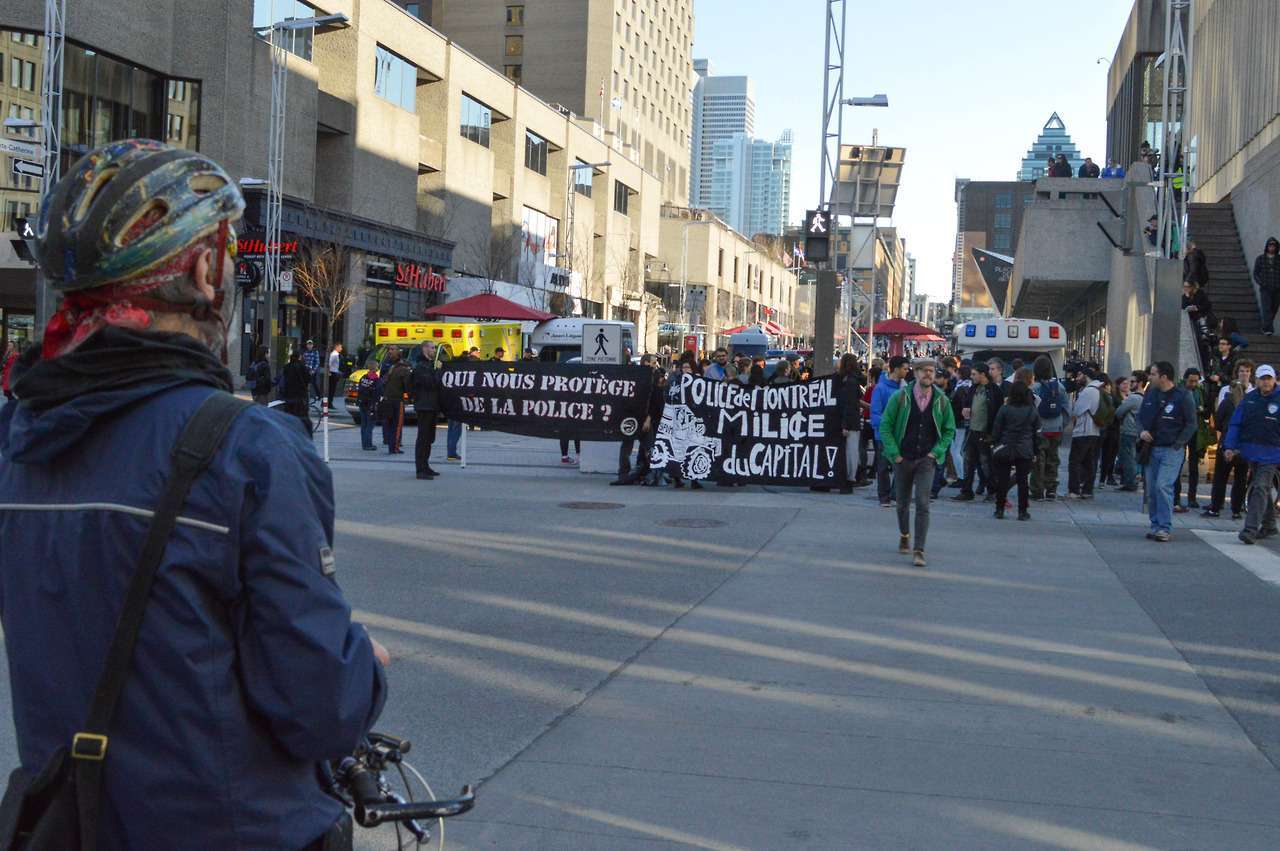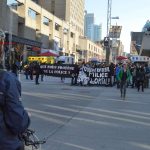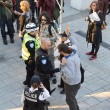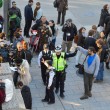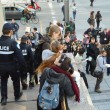Demonstrators rallied downtown to show solidarity with victims of police brutality on May 7. Approximately 40 people attended the protest, including individuals who had previously acquired injuries as a result of police actions.
The protest was held in part as a response to heightened police presence at an earlier demonstration in April, which protested government austerity and comprised of 10,000 attendees, according to L’Association pour une Solidaritè Syncidale Ètudiant (ASSE), the student union that took part in organising both demonstrations.
One attendee at the May rally, Robert Fransham, a 71-year-old activist, was injured in the April protest. According to Fransham, his leg received lacerations from police actions.
“I got hit by a police officer,” he said. “I was on my bicycle and he hit me with his shield and knocked me down. My leg got tangled up in the frame of my bicycle [….] I had to get stiches in my leg, and I’ve been on crutches because of the damage to the leg.”
The recent rally was also organised by the Collective Opposed to Police Brutality (COPB). Jennifer Bobette, a member of COPB, echoed Fransham’s statements, stating that remembering victims of police brutality is an integral part of mobilising against it.
“[It is] really important to not forget all those victims, and see how they are doing many years after their injuries,” she said. “It’s also important to denounce police abuses, and this is what we’re going to do.”
Demonstrators also rallied against the Montreal Police Service’s (SPVM) use of the municipal by-law P6, which requires demonstrators to provide their marching routes to the SPVM and bans the wearing of masks. If these regulations are not met, the demonstration can be declared illegal in accordance with the by-law.
In an earlier response to the controversial by-law, police spokesperson Stéphane Lemieux defended to CTV that the by-law helped ensure the safety of individuals involved in the protests.
“It helps us control the protests,” Lemieux said. “They can’t march against traffic and risk getting hit by cars.”
According to Michelle Moore, a media activist who attended the rally, the SPVM have been inconsistent in their enforcement of by-law P6.
“It’s up to police to decide whether or not they want to enforce the P6 rule [….] In my opinion, that is arbitrary,” Moore said. “[The police] are not enforcing this controversial law in a way that’s consistent. They’ll use it for some groups but not for others.”
For example, Moore noted that an Earth Day rally on April 22 was a protest that did not give an itinerary to the SPVM and was permitted to march.
Fransham said that he hopes that the recent events will bring awareness to the issue in the future.
“Police are very provocative, much more than they need to be,” he said. “My personal statement is to boost young people, who will take risks and come out to demonstrate against problems that exist in our society.”
Police at the scene declined to be interviewed.
